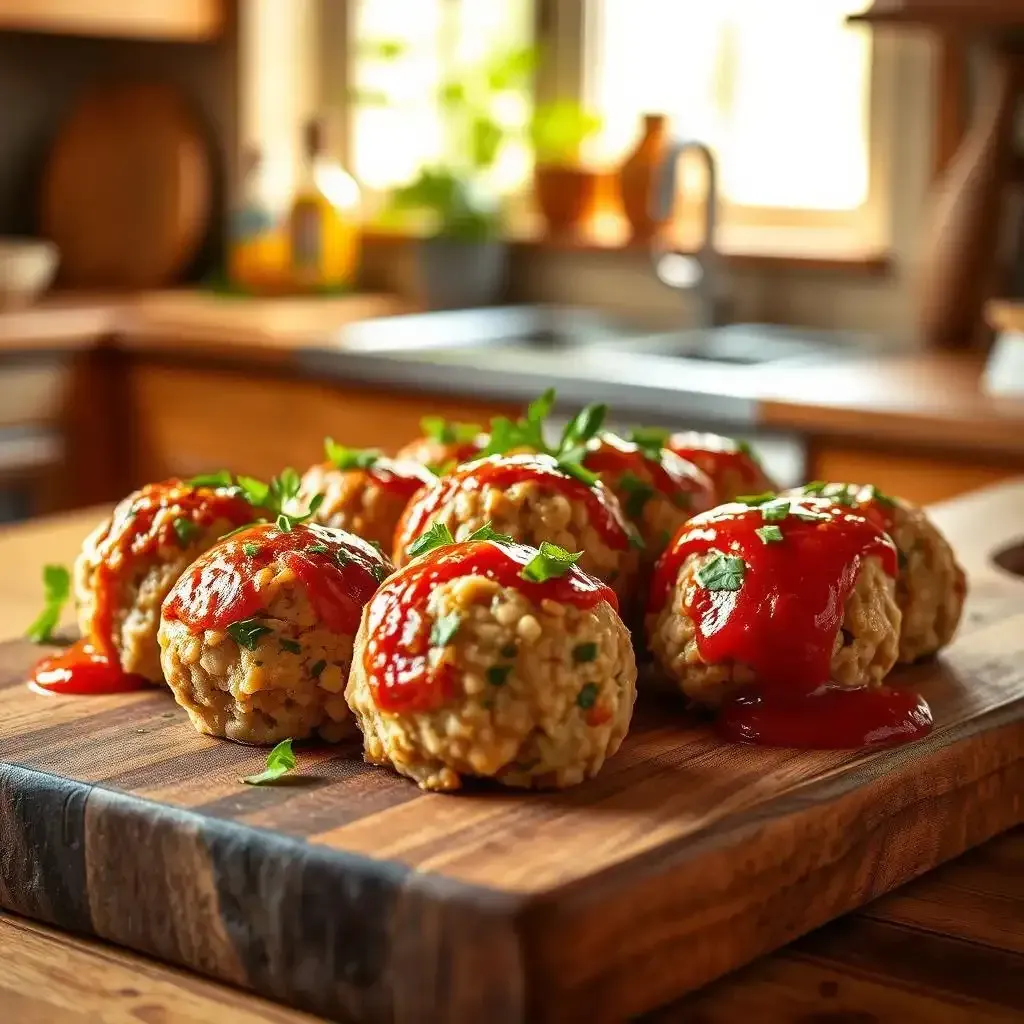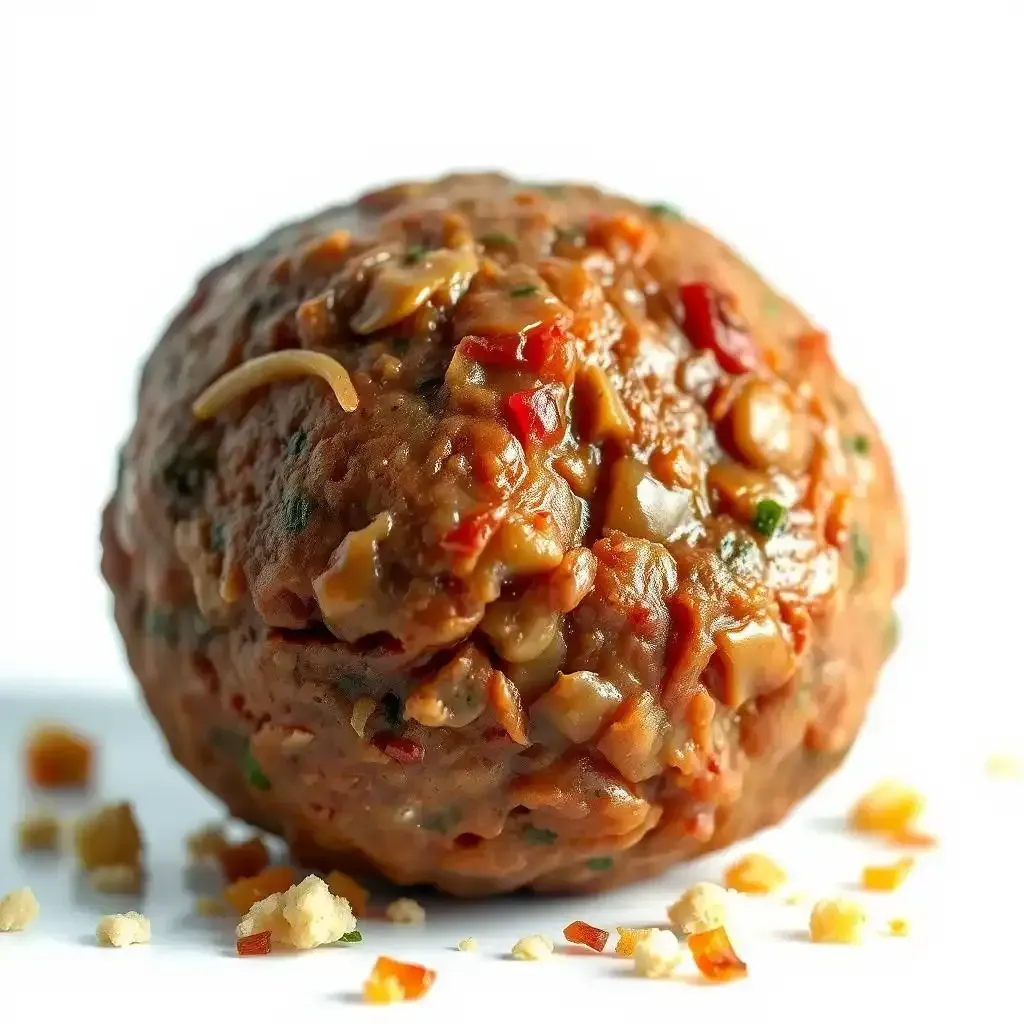Making the perfect chicken meatball is a culinary experience, and the trip begins with selecting the right ground chicken. At meatballrecipeskitchen.com, we understand that the best ground chicken for meatballs isn't just about leanness; it's about achieving the perfect balance of moisture, flavor, and texture. This article will guide you through the nuances of choosing the ideal ground chicken, exploring the role of fat content, examining the differences between dark and white meat, and ultimately empowering you to create irresistibly delicious chicken meatballs. We'll investigate into the specific characteristics that make certain types of ground chicken superior for this application, helping you avoid dry, crumbly meatballs and instead achieve juicy, flavorful perfection. Get ready to improve your meatball game!
Choosing the Best Ground Chicken for Meatballs: A Comprehensive Guide

Choosing The Best Ground Chicken For Meatballs A Comprehensive Guide
Fat: The Secret Weapon for Juicy Meatballs
Okay, let's talk fat. I know, I know, "fat" is a scary word for some people. But trust me, a little fat is your friend when it comes to making amazing chicken meatballs. Think of it like this: fat is the juicy secret ingredient. It keeps your meatballs moist and tender, preventing them from turning into dry, sad little hockey pucks. You want that delicious, melt-in-your-mouth texture, right? So don't shy away from ground chicken with a bit more fat. Aim for something around 80/20; that's 80% lean, 20% fat. It's the Goldilocks zone of chicken groundness. Too lean, and your meatballs will be seriously dry. Too fatty, and they'll be greasy. You want just right.
- Look for packages clearly labeling the fat percentage.
- Don't be afraid to ask your butcher for advice!
- Remember, a little fat goes a long way in flavor and texture.
Dark Meat vs. White Meat: The Great Chicken Debate
Now, we get into the dark meat versus white meat dilemma. This is where things get interesting. White meat (chicken breast) is leaner, but it can also be drier. Dark meat (thighs) is richer in flavor and fat, resulting in juicier meatballs. Some people swear by all white meat; others prefer a blend for the best of both worlds. I'm a big fan of blending. It's the best of both worlds, like peanut butter and jelly, or cookies and milk. I use roughly a 50/50 blend of white and dark for my meatballs. For supremely juicy meatballs, go all dark meat. For a leaner option, use a higher percentage of white meat, but be prepared to add some extra moisture to prevent dryness. You can always add a little extra oil to the pan when browning them to help with that.
For more tips on making amazing turkey meatballs, check out our best turkey meatballs recipe!
Meat Type | Fat Content | Moisture Level | Flavor Profile |
|---|---|---|---|
White Meat (Breast) | Low | Low | Mild |
Dark Meat (Thigh) | Higher | High | Rich |
Blend | Medium | Medium | Balanced |
Beyond the Grind: Other Factors to Consider
It’s not all about the type of ground chicken. The freshness of the chicken plays a big role, too. Buy your ground chicken from a reputable butcher or grocery store, and make sure it smells fresh and doesn't have any strange colors or slimy bits. Also, consider the grind. A coarser grind will give you a little more texture in your meatballs. A finer grind will result in a smoother texture. Ultimately, it's all about your personal preference. Don't be afraid to experiment!
For some extra inspiration, you might enjoy our easy chicken meatballs recipe!
Understanding Fat Content and its Impact on Meatball Texture

Understanding Fat Content And Its Impact On Meatball Texture
Let me tell you something: fat isn't the enemy! In fact, when it comes to chicken meatballs, a little fat is your secret weapon for juicy, tender perfection. Think of it like this: fat is the delicious moisture that keeps your meatballs from becoming dry, sad little pucks. Nobody wants a dry meatball. I mean, seriously, who's going to enjoy that? A meatball should be a delightful explosion of flavor and texture, not a chewy disappointment. So, don't be afraid of a bit of fat in your ground chicken. I aim for around 80/20 – that's 80% lean, 20% fat. It's the sweet spot, the Goldilocks zone of chicken groundness. Too lean, and your meatballs will be drier than the Sahara Desert. Too fatty, and, well, they'll be greasy. You want that happy medium, just right.
Now, I know what you're thinking: "But I'm trying to be healthy!" And that's totally valid. You can still make juicy meatballs with leaner chicken, but you might need to add a little extra help. Think of things like breadcrumbs or finely grated veggies to add moisture and bulk to the mix. You could even add a tablespoon or two of oil to the pan when browning the meatballs to add a little extra oomph. It's all about finding that balance between flavor, texture, and your health goals.
- Check the packaging for fat percentages.
- Ask your butcher for advice – they're meat experts!
- Remember, a little fat makes a BIG difference.
The Best Ground Chicken for Meatballs: Dark Meat, White Meat, or a Blend?
Alright, let's tackle the age-old question: dark meat or white meat? This is where it gets fun. White meat (chicken breast) is leaner, but it can be a bit dry. Dark meat (thighs), on the other hand, is richer in flavor and fat, leading to juicier meatballs. Some people are purists – all white meat for them! Others are team blend, enjoying the best of both worlds. I'm personally a big fan of the blend myself. It's the perfect compromise, kind of like combining chocolate and peanut butter. I usually do about a 50/50 mix of white and dark. For extra juicy meatballs, go all dark meat. If you prefer a leaner meatball, stick with mostly white meat, but be ready to add some extra moisture, like finely chopped vegetables to keep things plump and juicy.
I've experimented with all sorts of combinations, and honestly, the best approach is to try different things and see what you like best. Your taste buds are the ultimate judge. For some more tasty inspiration, check out our – you won’t regret it!
Meat Type | Fat Content | Moisture | Flavor |
|---|---|---|---|
White Meat (Breast) | Low | Low | Mild |
Dark Meat (Thigh) | Higher | High | Rich |
Blend | Medium | Medium | Balanced |
The Best Ground Chicken for Meatballs: Dark Meat, White Meat, or a Blend?
The Great Chicken Debate: White Meat vs. Dark Meat
Okay, let's investigate into the age-old question that plagues meatball makers everywhere: white meat or dark meat? It's like choosing between chocolate and vanilla – both are delicious, but totally different! White meat, usually from the chicken breast, is leaner. Think of it as the fitness fanatic of the chicken world. It's great if you're watching your calories, but it can be a little dry in meatballs, leaving you with something a bit…sad. Dark meat, on the other hand, from the thighs and legs, is richer and fattier. This is the party animal of the chicken world – full of flavor and moisture. It makes for incredibly juicy, flavorful meatballs, the kind that'll make your taste buds sing. It's the difference between a slightly dry sponge and a succulent steak.
For more ideas on making incredibly juicy meatballs, check out our ! You'll be surprised by how much flavor you can pack into a meatball.
Meat Type | Fat Content | Moisture Level | Flavor |
|---|---|---|---|
White Meat (Breast) | Low | Low | Mild |
Dark Meat (Thigh) | Higher | High | Rich |
The "Goldilocks" Solution: The Blend
Now, here's where I get really excited! I'm a firm believer in the strength of the blend. Why choose just one when you can have the best of both worlds? Mixing white and dark meat is like finding that perfect temperature in your shower – not too hot, not too cold, just right. You get the leanness of the white meat, keeping things healthy-ish, plus the juicy richness of the dark meat, guaranteeing flavor and texture that'll knock your socks off. I usually go for a 50/50 mix, but feel free to experiment! Maybe you'll find your perfect ratio is 60/40 or even 70/30. It's all about finding what pleases your palate.
If you're looking for some quick inspiration, check out our quick chicken meatballs recipe. It’s perfect for a busy weeknight!
- Experiment with different ratios of white and dark meat.
- Taste as you go to find your perfect blend.
- Don't be afraid to get creative!
Beyond the Blend: Other Factors for Perfect Meatballs
So, you've chosen your chicken – fantastic! But we're not done yet. Think of your meatball ingredients as a team. You need star players, but also solid role players to bring it all together. The freshness of your chicken is crucial. Buy it from a place you trust, and make sure it smells fresh and looks good. You wouldn't start a basketball game with flat tires, would you? Also, consider the grind. A coarser grind will give you a more rustic texture, while a finer grind will result in a smoother meatball. It's like the difference between a chunky salsa and a smooth one – both are tasty, but different.
For more amazing meatball ideas, you can explore our recipe. It's a winner every time!
Final Thought
Ultimately, the "best" ground chicken for meatballs depends on your personal preferences and desired outcome. Experiment with different fat contents and blends to find your perfect match. Remember, the right ingredients and technique are just as important as choosing the right ground chicken. Happy meatball making!